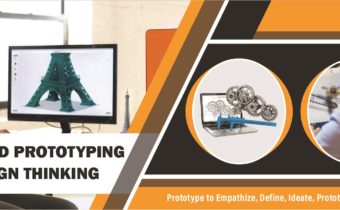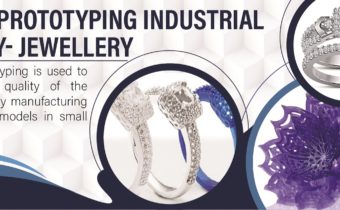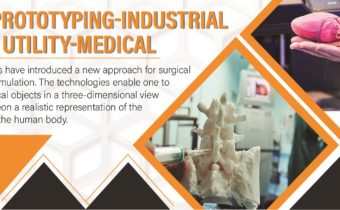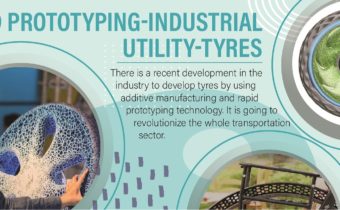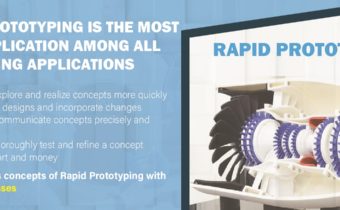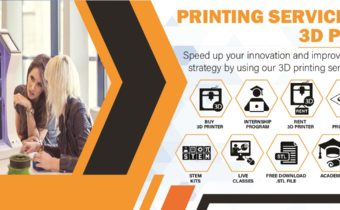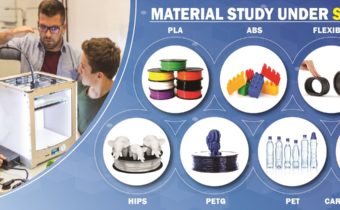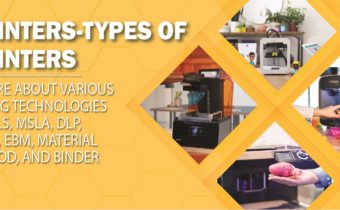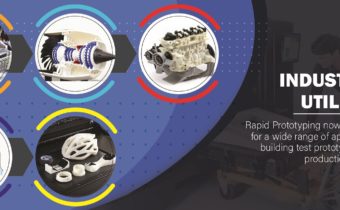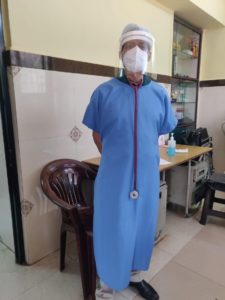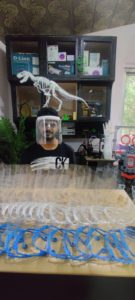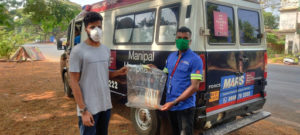There are plenty of options available in terms of what materials you can use when it comes to 3D printing and Researchers across the globe are constantly innovating new materials 3D printable every day.
There are some main material types used in 3D printing. Most common of them are plastics, which can range from engineering grade like Polyetheretherketone (PEEK), or very easy to use like Polylactic Acid (PLA). Resin is another common material and it’s used with Stereolithograph (SLA) printers.
Composites are another category and, as the name implies, they’re created by combining two materials to get the best properties of each one. The last big group of materials is metals. These are only printable using industrial machines.
Which material is best for my use?
It entirely depends on your requirement. Thanks to the recent advancement in 3D printing technology, you have multiple options available to choose from.
PLA:
PLA is the most commonly used material due to its low coat, ease of use and dimensional accuracy.
Polylactic Acid, commonly known as PLA, is the default filament of choice for most extrusion-based 3D printers, as it can be printed at a low temperature and does not require a heated bed. It is also environmentally friendly. Derived from crops such as corn and sugarcane, PLA is renewable and biodegradable. Additionally, this also allows the plastic to give off a sweet aroma during printing.
PLA is available in a broad range of colors and also comes in a variety of composites, which can give it the appearance of wood or metal.
Pros:
Low cost.
Stiff and have good strength.
Good dimensional accuracy.
Good self life.
Cons:
Low heat resistance.
Not suitable for outdoors (sunlight exposure)
Filament can get brittle and may break
Technologies: FDM, SLA, SLS
Properties: Biodegradable, Food safe
Applications: Concept models, DIY projects, Functional models, Manufacturing etc.
ABS:
Have you ever used Lego bricks? Then you can easily relate to why ABS plastic is one the most popular 3D printing materials available today.
ABS, which is acronym of Acrylonitrile Butadiene Styrene, has a long history in the 3D printing world. This material was one of the first materials to be used with industrial 3D printers. ABS is known for its toughness and impact resistance, allowing you to print durable parts that will hold up to any wear and tear.
ABS also has a higher glass transition temperature, which means that the material can withstand much higher temperatures before it begins to deform. It makes ABS a great choice for outdoor and high temperature applications.
Pros:
Low Cost.
Good impact and wear resistance
Good heat resistance
Smoother finish
Cons:
Needs heated bed or heated chamber
Heavy warping
Parts tend to shrink while being printed leading to dimensional inaccuracy
Produces a pungent odor while printing
Technologies: FDM, Binder Jetting, SLA, PolyJetting
Properties: Strong, light, high resolution, somewhat flexible
Applications: Architectural models, Concept models, DIY projects, Manufacturing etc.
Flexible:
Flexible filaments, commonly referred as TPE or TPU, are known for their elasticity allowing the material to easily stretch and bend.
Flexible filaments are made of Thermoplastic Elastomers (TPE) which are a blend of hard plastic and rubber. As the name suggests, this material is elastic in nature allowing the plastic to be stretched easily. There are several types of TPE, with Thermoplastic polyurethane (TPU) being the most commonly used among 3D printing filaments. In many cases, these terms are used interchangeably.
The degree of elasticity in the plastic depends on the type of TPE and the chemical formulation used by the manufacturer. For example, some filaments may be partially flexible like a car tire but others may be elastic and fully flexible like a rubber band.
Pros:
Soft and flexible
Long shelf life
Good impact resistance
Long shelf life
Cons:
Difficult to print
Applications: Vibration dampening, Grip Sleeves, Phone cases etc.
HIPS:
HIPS or High Impact Polystyrene is a lightweight material most commonly used as a dissolvable support structure for ABS models.
HIPS has two applications. It is often used as a support material in FDM and SLA printing because it dissolves in the chemical Limonene. Since the two share similar properties, HIPS works best when used in conjunction with ABS. But, as the name High-Impact Polystyrene suggests, HIPS is also an extremely durable material that is suitable for shipping containers or other applications that require high impact resistance.
Pros:
Low cost
Dissolvable by Limonene
Impact and water resistant
Lightweight
Cons:
Heated bed required
High printing temperature
Ventilation required
Heated chamber recommended
Technologies: FDM, SLA
Properties: Soluble, highly durable
Applications: DIY projects, Support material, Shipping containers etc.
PETG:
PET and PETG filaments are well known for their ease of printability, smooth surface finish, and water resistance.
PETG is a Glycol Modified version of Polyethylene Terephthalate (PET), which is widely used to manufacture water bottles. There are several variations of this material available in the market including PETG, PETE, and PETT.
PETG components are weather-resistant and are thus often used for garden appliances. Another selling point is its use as a food-safe 3D printing material.
Pros:
Glossy and smooth surface finish
Adheres well to the bed with negligible warping
Mostly odorless while printing
Cons:
Poor bridging characteristics
May produce thin hairs on the surface from stringing
Technologies: FDM
Properties: Strong, food-safe, weather-resistant, hardly inflammable
Applications: Concept models, DIY projects, Functional models, Manufacturing etc.
PET:
This is the material water bottles are made of.
This material is the second alternative to ABS. Unlike ABS, PET does not emit odorous fumes when melted but it is just as strong and flexible. More importantly, PET does not require a heated bed. This material has a glossy finish and is food safe which makes it a popular choice for many consumer products. Store PET 3D printing materials in vacuum bags or containers to protect against humidity.
Technologies: FDM
Properties: Strong, food safe, flexible, smooth surface
Applications: DIY projects, Manufacturing, Functional models etc.
Nylon (Polyamide):
Nylon is a tough and semi-flexible material which offers high impact and abrasion resistance. It is an ideal choice for 3D printing durable parts.
Nylon (a.k.a. Polyamide) is a popular material in the plastics industry, known for its toughness and flexibility. Nylon filaments typically require extruder temperatures about 250 ºC, however, some brands allow printing at temperatures as low as 220 ºC due to their chemical composition. Many printers do not include a hotend that can safely reach 250 ºC, so these lower-temperature versions can be useful and potentially save you from needing to upgrade your hotend.
Given its flexibility and strength, Nylon which is also referred to as “white plastic” ,is the premier choice for a wide range of applications from engineering to arts. Nylon prints have a rough surface that can be polished smooth. Among FDM filaments, the layer bonding of nylon is stronger than all others, making it the ideal 3D printing material for parts that require good tensile and mechanical strength.
One big challenge with Nylon filaments is that they are hygroscopic, which means they readily absorb moisture from their surroundings. Printing Nylon after it has absorbed moisture will lead to several print quality issues, thus filament storage becomes very important and requires special attention.
Pros:
Tough and partially flexible
High impact resistance
Good abrasion resistance
No unpleasant odor while printing
Cons:
Prone to Warping
Not suitable for moist and humid environments
Air-tight storage required to prevent water absorption
Improperly dried filaments can cause printing defects
Technologies: FDM, SLS
Properties: Strong, smooth surface (polished), somewhat flexible, chemically resistant
Applications: Functional models, Concept models, Medical applications, Tooling, Visual arts etc.
Carbon Fiber Filled:
Carbon fiber filaments contain short fibers that are infused into a PLA or ABS base material to increase strength and stiffness.
Carbon fiber filaments use tiny fibers that are infused into a base material to improve the properties of that material. Several filaments can be bought with carbon fiber fill including PLA, PETG, Nylon, ABS, and Polycarbonate. These fibers are extremely strong and cause the filament to increase in strength and stiffness.
This also means that the 3D printed parts will be much lighter and more dimensionally stable, as the fibers will help prevent shrinking of the part as it cools. Printing setting will be normal, however, due to the added fibers, these specialty materials are more likely to clog and can require special hardware to avoid damaging the printer.
Pros:
Increased strength and stiffness
Very good dimensional stability
Lightweight
Cons:
Abrasive and requires hardened steel nozzle
Increased brittleness of filament
Higher tendency to clog
Increased oozing while printing
Applications: Functional prototypes, R/C Vehicles, Decorative pieces, Lightweight props etc.
ASA:
ASA is a common alternative to ABS and is great for outdoor applications due to its high UV, temperature as well as impact resistance.
Also known as Acrylic Styrene Acrylonitrile, ASA is a 3D printable plastic with properties similar to ABS. It was originally developed as an alternative to ABS that would be more UV resistant by changing the type of rubber that’s used in its formulation.
ASA is known for its high impact & temperature resistance, and increased printing difficulty. It’s commonly used in outdoor applications in place of ABS due to its superior resistance to UV and harsh weather conditions.
Pros:
Strong UV resistance
High impact and wear resistance
High glass transition temperature
Cons:
Expensive
Requires higher extruder temperatures
Requires ventilation due to potentially dangerous fumes
Applications: Automotive exterior parts, Exterior signage, Outdoor electronics housings etc.
Polycarbonate:
Polycarbonate is known for its strength and durability. It has very high heat and impact resistance, making it an ideal choice for tough environment applications.
Polycarbonate (PC) is a high strength material intended for tough environments and engineering applications. It has extremely high heat deflection, impact resistance and also has a high glass transition temperature of 150 °C which means it will maintain its structural integrity up to that temperature, making it suitable to use in high-temperature applications. It can also be bent without breaking and is often used in applications where some minor flexibility is required.
Polycarbonate is extremely hygroscopic, meaning it will absorb moisture from the air, which will affect its printing performance and strength. It should be stored in air-tight, moisture-free containers after opening. It also requires very high temperatures for printing and will exhibit layer separation if printed at too low of a temperature or with excessive cooling enabled. Polycarbonate is frequently best printed on a machine that has an enclosed build volume and is capable of handling high bed and extruder temperatures.
Pros:
Impact resistant
High heat resistance
Bendable without breaking
Naturally transparent
Cons:
Requires very high print temperatures
Prone to warping
Absorbs moisture from the air which can cause print defects
High tendency to ooze while printing
Polypropylene:
Polypropylene is great for high-cycle, low strength applications due to its various characteristics like: fatigue resistance, semi-flexible, and lightweight.
Polypropylene is a semi-rigid and lightweight material that is commonly used in storage and packaging applications. Polypropylene is tough and has a good fatigue resistance making it ideal for low strength applications like living hinges, straps, leashes, etc.
Pros:
Good impact and fatigue resistance
Smooth surface finish
Good heat resistance
Cons:
Low strength
Difficult to adhere to bed and other adhesives
Heavy warping
Expensive
Applications: Storage containers, Living hinges, Watch straps etc.
Metal:
Metal filled filaments are made by mixing fine metal powder into a base material, providing a unique metallic finish.
These filaments contain very fine metal powder such as Copper, Bronze, Brass, and Stainless Steel. These filaments are heavy and also tend to be very abrasive as they are extruded through the hotend.
Be aware that your 3D printed parts will require post-processing to get the desired metal appearance. Also, be sure your printer nozzle can handle the material.
Pros:
Metallic finish is aesthetically appealing
Does not need high-temperature extruder
Heavier than standard filaments
Cons:
Printed parts are very brittle
Requires a wear-resistant nozzle
Very poor bridging and overhangs
Can cause partial clogs over time
Expensive
Technologies: FDM
Properties: Metallic finish
Applications: Visual arts.
Wood:
Wood filaments combine a PLA base material with cork, wood dust, or other derivatives, thus giving the models a real wooden look and feel.
The filament typically consists of around 30% wood particles. This filament is less abrasive compared to other composite filaments such as carbon-fiber filled and metal filled, since wood particles are much softer.
Pros:
Wood-textured finish is aesthetically appealing
Does not require any expensive wear resistant nozzles
Aromatic and pleasant smelling
Cons:
Smaller nozzles can end up with partial clogs over time
May require a larger size nozzle
Prone to stringing
Technologies: FDM
Properties: Fragile
Applications: Conceptual models, Visual arts etc.
PVA:
PVA is commonly known for its ability to be dissolved in water and is often used as a support material for complex prints.
PVA, or Polyvinyl Alcohol, is a soft and biodegradable polymer that is highly sensitive to moisture. When exposed to water, PVA dissolves, which makes it a very useful support structure material for 3D printing.
While printing extremely complex shapes or ones with partially enclosed cavities, PVA supports can be used and easily removed by dissolving in warm water. Standard supports may have been difficult to print or remove in these situations. PVA can also be used as a material if there is a need to make quick prototypes.
Pros:
Water dissolvable support material
No special solvents required
No additional hardware required
Cons:
Moisture sensitive
Airtight storage containers required
Greater chances of clogging if the nozzle is left hot when not extruding
Expensive
Applications: Removable supports, Dissolvable/Disintegratable applications, Decorative parts etc.
PEEK :
PEEK (Polyetheretherketone ) is one of the 3D printing materials designed for high-performance parts.
Plastics of this family are highly resistant to chemicals, stress and temperature. Parts made from PEEK can be exposed to X-ray and gamma radiation. The problem here is, you have to fire up to 400°C in order to extrude this kind of material. Thus this kind of material is mostly used by professionals.
Despite being costly, these materials are used in the most demanding applications the automotive, aerospace, chemical and medical industries can muster, owing to their exceptional properties.
Technologies: FDM, SLS
Properties: Bio-compatible, highly durable, heat resistant, hard wearing
Applications: Manufacturing (automotive, aerospace, chemical, and medical industries etc.)
ULTEM:
ULTEM is one of the amazing 3D printing materials that is often found in high-performance applications.
Plastics of this family are highly resistant to stress, temperature, and chemicals, and also excel by their ease of machining and fabrication. Here again your 3D printer has to fire up to 400°C in order to extrude these 3D printing materials.
Due to their robustness, ULTEM 3D printing materials are used in some of the most demanding applications in the automotive, aerospace, chemical and medical industries. You can find the material in electrical connectors, medical instruments, and chip test sockets
Technologies: FDM, SLS
Properties: Bio-compatible, highly durable, heat resistant, hard wearing
Applications: Manufacturing (automotive, aerospace, chemical, and medical industries etc.)
Conductive:
A relatively new addition to the filament market, conductive 3D printing materials enable many exciting new design opportunities for the maker community.
This amazing material can be used to create touch sensors in applications that require human interface devices like gaming pads and MIDI machines. Other maker projects include conductive traces in wearable electronic devices and creating interfaces between computers, Arduino boards, and other components to build elaborate DIY projects.
Conductive 3D printer filament is usually based in either PLA or ABS plastics. Each of which brings the benefits and problems of the original material to the table. Conductive ABS is stronger and more heat resistant than the PLA variant, but it comes with the same fume problems as normal ABS.
Technologies: FDM
Properties: Conductive
Applications: DIY projects.
Alumide:
Alumide is a variation of nylon that has been combined with aluminum particles.
In terms of durability and physical properties, this material is very similar to nylon. The difference is found in the shiny, durable and porous surface finish.
Components printed with alumide have an excellent size accuracy, are tough and suitable for long term use. Alumide and similar 3D printing materials are highly suitable for various post-processing techniques like polishing or coating.
Technologies: SLS
Properties: Strong, heat resistant, high resolution
Applications: DIY projects, Functional prototypes, Manufacturing etc.
Aluminum:
Because of its lightness and versatility, aluminum is now one of the most popular 3D printing materials found in a wide range of applications.
It is used primarily as different aluminum-based alloys. Components made from aluminum can feature thin walls and complex geometries. They are highly resistant to mechanical stress and high temperatures. This makes them suitable for low-cost prototypes, functional models such as motors, in the automotive and aerospace industries.
Technologies: Direct Metal Deposition, Binder Jetting
Properties: Light, strong, heat resistant, corrosion resistant
Applications: Functional models, Manufacturing (automotive & aerospace industries) etc.
Cobalt Chromium:
Cobalt chromium is sometimes called a “super alloy”.
This material is mostly used in medical applications and the components for the aerospace industry, like turbines or jet engines. It stands out for excellent properties such as strength, but also its temperature and corrosion resistance, yet still suitable for components with fine features.
Technologies: Direct Metal Laser Sintering, SLM
Properties: Bio-compatible, strong, corrosion resistant, heat resistant, hard wearing, low conductivity
Applications: Manufacturing (medical & aerospace industries).
Copper and Bronze:
Copper and bronze are mostly used for lost wax casting processes and less often in powder bed fusion processes.
These 3D printing materials are found in electrical engineering because of their conductivity. They also draw a large following in the arts and crafts community.
Technologies: Lost Wax Casting, Powder Bed Fusion, Direct Metal Deposition
Properties: Conductive, hard wearing
Applications: Manufacturing (electrical engineering), Visual arts etc.
Inconel:
Inconel is a superalloy produced to withstand the most extreme environments.
It is composed primarily of nickel and chrome and it has high temperature resistance. In combination with its resilience to extreme pressure, it is the perfect material to manufacture airplane black boxes or even parts of rocket engines.
More commonly, these properties are also employed for numerous applications in the oil, and chemical industries. Due to its strength, it is hard to machine this material. Therefore, Direct Metal Laser Sintering is one of the preferred methods to shape it.
Technologies: Direct Metal Laser Sintering
Properties: Heat resistant, hard wearing
Applications: Oil, Chemical and Aerospace industries etc.
Nickel:
Nickel alloys are popular 3D printing materials for technical applications.
Nickel alloy components made using 3D printing are stronger and more durable when compared to nickel alloy parts made using traditional techniques such as casting. This, in turn, allows engineers to make the components thinner, resulting in, for example, more fuel-efficient airplanes.
Technologies: Powder Bed Fusion, Direct Metal Deposition
Properties: Strong, lightweight
Applications: Manufacturing (automotive and aerospace industries).
Precious Metals (Gold, Silver, Platinum):
Most powder bed fusion companies can 3D print with precious metals such as gold, silver, and platinum.
The challenge here, along with maintaining the materials aesthetic properties, is to make sure that none of the precious powder is lost. Precious metals are used for 3D printing materials for jewelry, medical and electronics applications.
Technologies: Powder Bed Fusion, Lost Wax Casting, Binder Jetting
Properties: High resolution, smooth surface
Applications: Jewelry, Dentistry, Functional models etc.
Stainless Steel:
Stainless Steel is one of the most affordable 3D printing metals.
This type of steel alloy, which also contains cobalt and nickel, is particularly hard to break, while also boasting excellent elastic and magnetic properties. In case you prefer another color, you can plate it to give it the appearance of, say, gold. This material is used mostly for industrial applications.
Technologies: Direct Metal Deposition, Binder Jetting
Properties: High resolution, corrosion resistant, somewhat flexible, strong
Applications: Tooling, Functional models, Manufacturing
Titanium:
Titanium is one of the most versatile 3 D printing materials, as it is both strong and light.
You will mostly find it in high-performance medical applications, for example, to make personalized prostheses. Other applications for this material include parts and prototypes for the aerospace, automotive, and tooling industries. Apart from the cost, there is another catch: It belongs to a family of highly reactive 3D printing materials, which means it can easily explode when it is in powder form. For this reason, it needs to be 3D printed in a vacuum or in an argon gas atmosphere.
Technologies: Powder Bed Fusion, Binder Jetting, Direct Metal Deposition
Properties: Bio-compatible, high resolution, heat resistant, highly durable
Applications: Tooling, Functional models, Manufacturing (automotive, aerospace, medical industries) etc.
WAX:
Wax 3D prints are usually not the end product, but an essential stage in the production process.
They are used to produce molds with stunningly high resolution (0.025 mm) for the lost wax casting technique of metal components. It is often employed to create customizable jewelry at a comparatively low price. The second industry that uses this kind of 3D printing materials is the dental medicine industry. You can 3D print complex structures that require supports by using waxes of different melting points and melting the supports off at low temperatures.
Technologies: SLA, PolyJet
Properties: High resolution, smooth surface
Applications: Manufacturing (jewelry, dentistry).
Sandstone:
Also referred as “gypsum” you can create spectacular full-color parts in one process with sandstone.
Considering the finicky nature of sandstone, it is mostly used for architectural models, conceptual prototypes and art projects.
Technologies: FDM, Binder Jetting, Powder Bed Jetting
Properties: Fragile, full-color
Applications: Conceptual models, Visual arts etc.
PolyJet Resins:
Like SLA resins, PolyJet materials simulate different properties of “traditional” 3D printing materials.
Most of the materials available have quite descriptive names. Rigur, for instance, is a material designed for strength. It is also dubbed “simulated propylene” for its similar surface finish and functionality. A range of 3D printing materials is marketed as “Digital ABS” because they are both heat-resistant and tough. “Rubber-like” materials are designed for non-slip surfaces and vibration dampening over molding.
PolyJet Resins are an excellent choice for color prototypes of consumer products, for testing with consumer groups.
Technologies: PolyJet
Properties: High resolution, smooth surface, flexible, heat resistant, transparent
Applications: Conceptual models, Visual arts, Jewelry, Medical manufacturing, Tooling (prototypes) etc.
